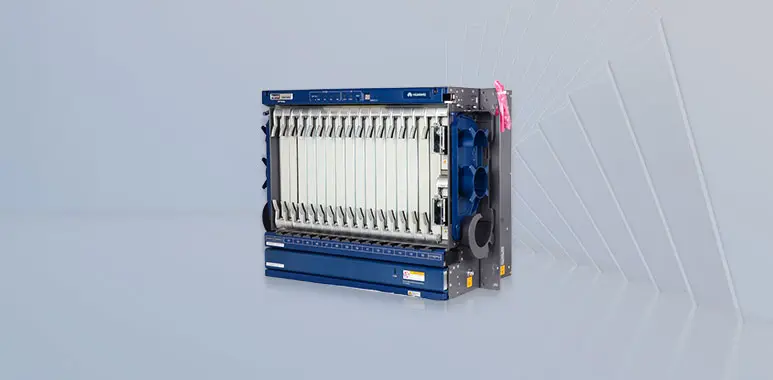OptiX OSN 8800 is mainly used in national trunk lines, regional/provincial trunk lines, and metropolitan area networks. It features large-capacity OTN dispatching capabilities and integrates ROADM (dynamic optical add/drop multiplexing), Tbit electrical crossover, and 100M to 100G full-grain Dispatching, photoelectric intelligent ASON, 40G/100G transmission, rich management and protection, and other functions can build end-to-end OTN/WDM backbone transmission solutions for operators to realize large-capacity dispatch and ultra-wideband intelligent transmission.
OptiX OSN 8800 T64/T32/T16 can form a complete OTN end-to-end network, can also build a WDM network with OptiX BWS 1600G, OptiX OSN 1800, OptiX OSN 9800, and can also be used with NG-SDH, PTN, or data communication equipment Hybrid networking realizes a complete transmission solution.
What is WDM?
WDM is the abbreviation of wavelength division multiplexing technology.
Speed of light in the air: 30km per second
Speed of light in fiber: 20km per second
WDM realizes high-speed transmission. Similar to a prism, white light can be divided into seven-color light. The seven-color light converges into white light at the receiving end. Each color light can be further subdivided and identified by wavelength.
80-wave WDM system, theoretically the rate is increased by 80 times.
WDM can realize low-cost and ultra-long-distance transmission. Ordinary communication technologies, such as routers/switches/SDH, need to change vehicles <80km-100km> after transmission for a certain distance to continue running, which is costly. WDM can refuel all cars at the same time over a certain distance without changing cars. It can run several thousand kilometers in a single run, which greatly reduces the cost.
Gray light generally occupies an optical fiber, the center wavelength is 850nm, 1310nm, or 1550nm
Color light: the light of a specific wavelength is called color light, whether it is DWDM or CWDM
C/L band loss is the smallest, and the most widely used band in the current WDM system is the C band
Features of OSN8800
It has the highest level of integration in the industry, and a single subrack can access 320/640*10G or 32/64*100G services; supports massive IP service access, centralized scheduling and management, eliminating the previous assembly and networking of multiple subracks; saving 80% Occupies a floor area, reduces power consumption per unit bandwidth by 55%, eliminates ODF fiber-optic switching, and has high reliability.
3.2T/6.4T non-blocking electrical crossover capacity, support for complex networking, centralized scheduling of massive services; support 2/4/9/20 dimension ROADM optical crossover; support photoelectric hybrid crossover, flexible implementation of wavelength/sub-wavelength level business cross scheduling, Fast service deployment, and lower CAPEX. At the same time, the industry’s first CDCG (wavelength-independent, direction-independent, blocking-independent, and grid-independent) ROADM with a minimalist architecture is constructed, which simplifies the node configuration of the optical layer ASON.
Mature commercial 96*100G system, unlimited bandwidth transmission; the industry’s only OCh and ODUk photoelectric double-layer intelligence, photoelectric linkage new mode, with higher reliability.
With MS-OTN features, the centralized cross-connect board supports OTN/SDH/packet cross-over; OTN, SDH, and packet services can be flexibly combined to improve the board and bandwidth utilization efficiency.
Support submarine cable transmission, leading 100G submarine cable solution, support 100G non-electric relay 12,000 kilometers transmission.
It provides 2M, 1588v2, and synchronous Ethernet clock transmission, which fully meets the clock accuracy requirements of 3G/4G and the new generation of mobile communication technology.
Support OSNR (Optical Signal-to-Noise Ratio) optical power and BER (Bit Error Rate) monitoring of any channel of 10G/40G/100G, realize real-time online monitoring of optical parameters and improve network operation and maintenance efficiency.
Integrated OTDR (Optical Time Domain Reflectometer) function, supports online OTDR detection of fiber parameters through the monitoring board, quickly locates fiber failure points, and locates fiber degradation points.
Support for TSDN-oriented evolution, improve service delivery efficiency, simplify network operation and maintenance, and improve network intelligence. At the same time, TSDN can realize cross-layer and cross-domain network resource unified scheduling and network intelligent management, and support rich APP applications and business innovation.


Leave a comment